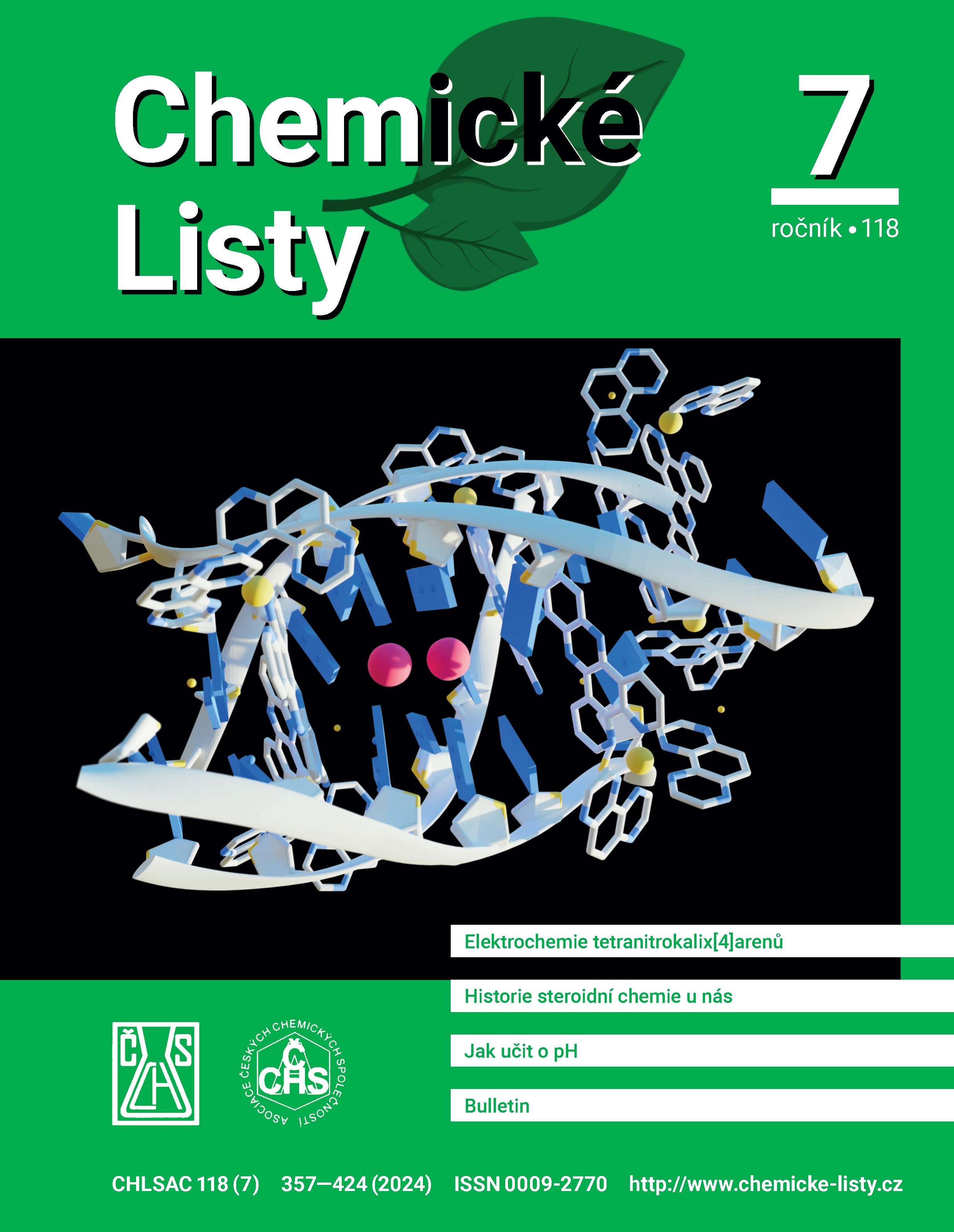Stereoelectrochemistry of Tetranitrocalix[4]arenes
New perspectives on analytical chemistry
DOI:
https://doi.org/10.54779/chl20240359Keywords:
stereoelectrochemistry, atropoisomers of calix[4]arenes, electrochemical reduction of nitro-derivatives, polarography, voltammetry, DFT calculationsAbstract
The present article reveals the differences in voltammetric reduction curves of isomeric nitrocalix[4]arenes (a kind of their “fingerprints”). This observation represents a contribution to a newly introduced utilization of electrochemical approach called “stereoelectrochemistry” and extends the knowledge on these polycyclic molecules. In stereoelectrochemistry, the electrochemical data (potentials and their shifts, number of individual redox steps, proportions of their currents, reversibility etc.) in correlation with a series of derivatives can offer important information concerning the shape, geometry, conformation and static/dynamic behaviour of studied molecules in solution. Four possible atropoisomers of para-tetranitrocalix[4]arene were investigated by DC polarography and cyclic voltammetry in aprotic media (anhydrous N,N-dimethylformamide). Under such conditions, a typical reduction mechanism of a nitro compound involves a reversible single electron reduction step yielding an anion radical, followed by three-electron irreversible process assisted by protons (from moisture traces). While the already published most symmetric cone-conformer accepts first four electrons in two separated steps (which is in accordance with the “pinched” C2v shape of the molecule), the same behaviour was observed also in the case of 1,3-alt-derivative, the equilibrium geometry of which was predicted to be highly symmetric (S4), with no distinction among the nitro substituents. Hence, the 1,3-alt-molecule must oscillate around the equilibrium geometry (slower than the time scale of electron transfer) to produce a pinched limiting geometry with two different pairs of nitro groups (distal and proximal). The paco-derivative (and also its dinitro analogue) is reduced in three steps, during which the “tilted” aromatic unit is reduced first, followed by the opposite one (distal), and eventually another pair of proximal nitro groups (equivalent) is reduced simultaneously. The least symmetric 1,2-alt-compound (C1) is reduced in four single-electron, difficultly resolved steps due to small differences in the individual nitro groups energy.





